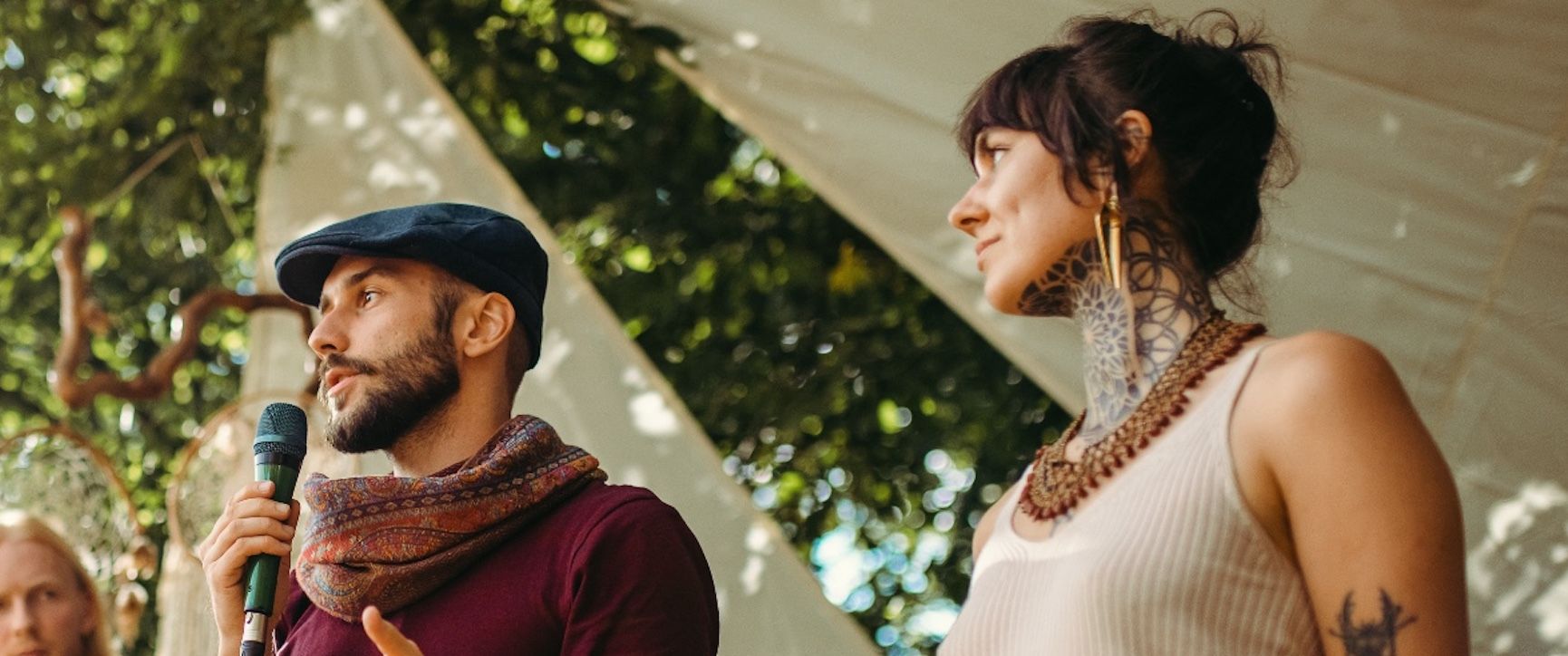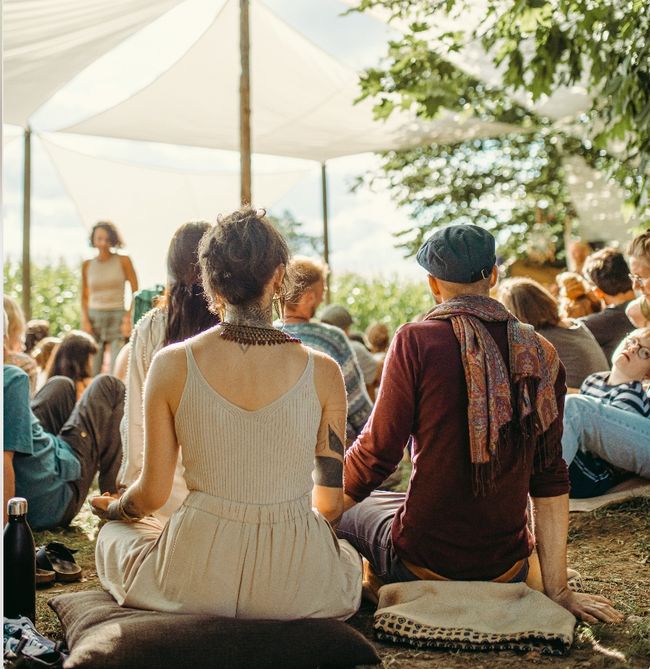
zwei-kuenstler-und-die-weite-welt
vakantio.de/zwei-kuenstler-und-die-weite-welt
Bangkok's days, Bangkok's nights
Yayınlanan: 14.04.2024

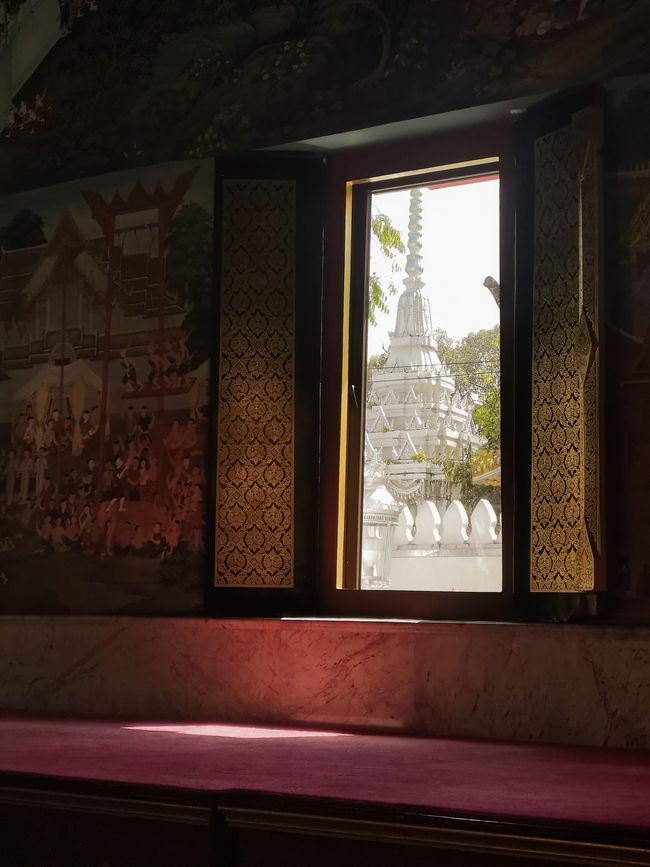
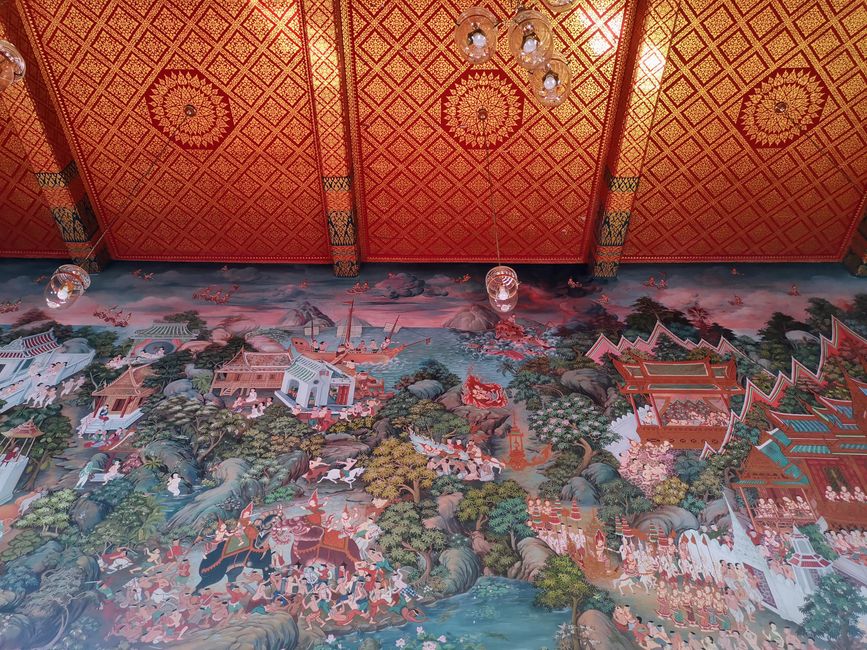
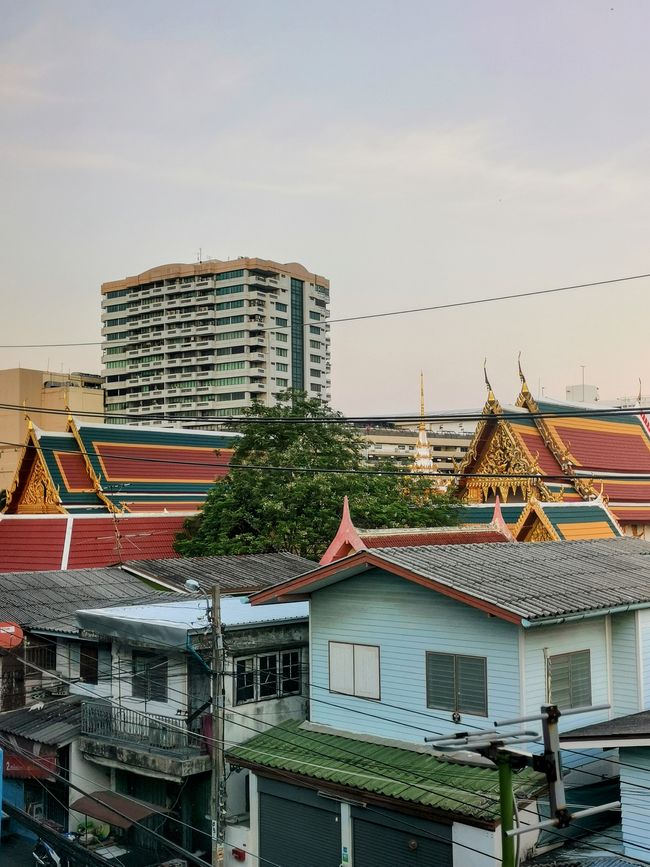
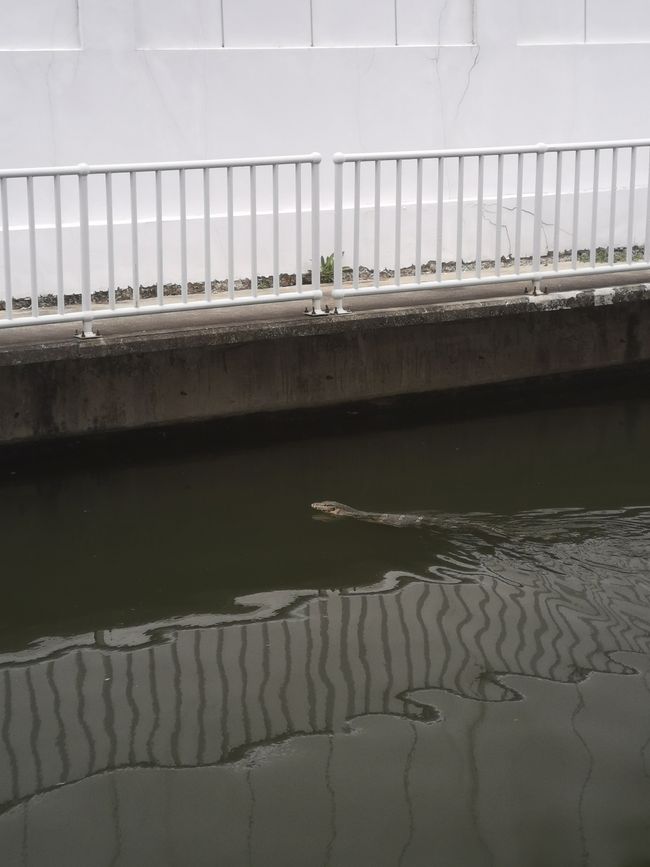

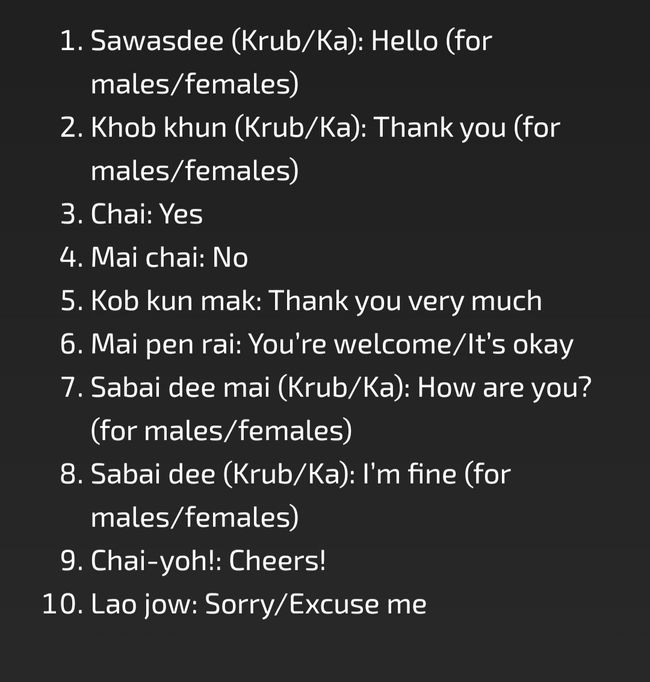
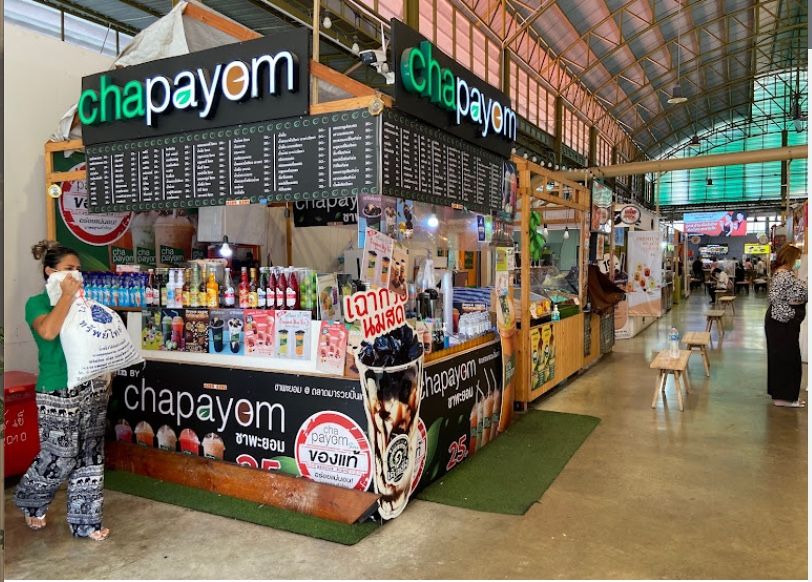

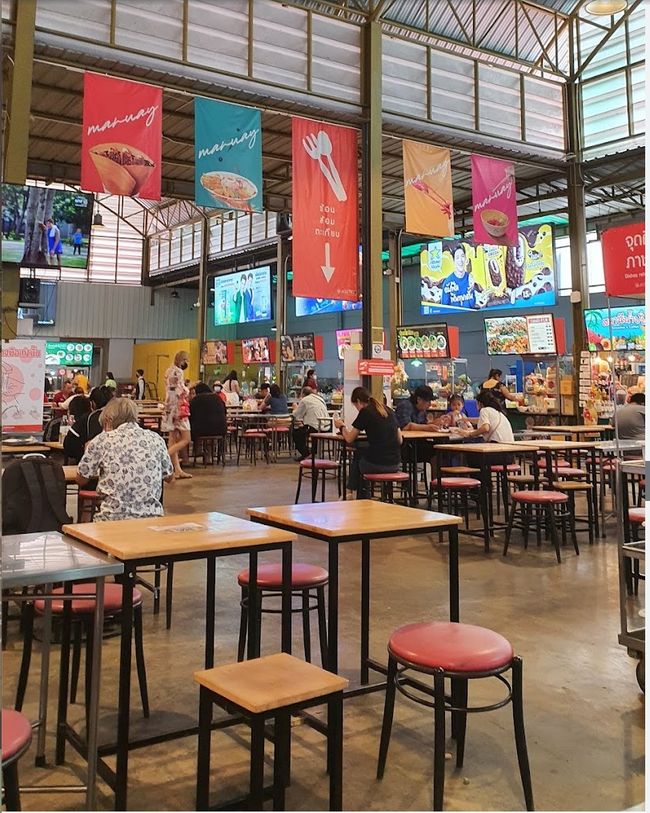
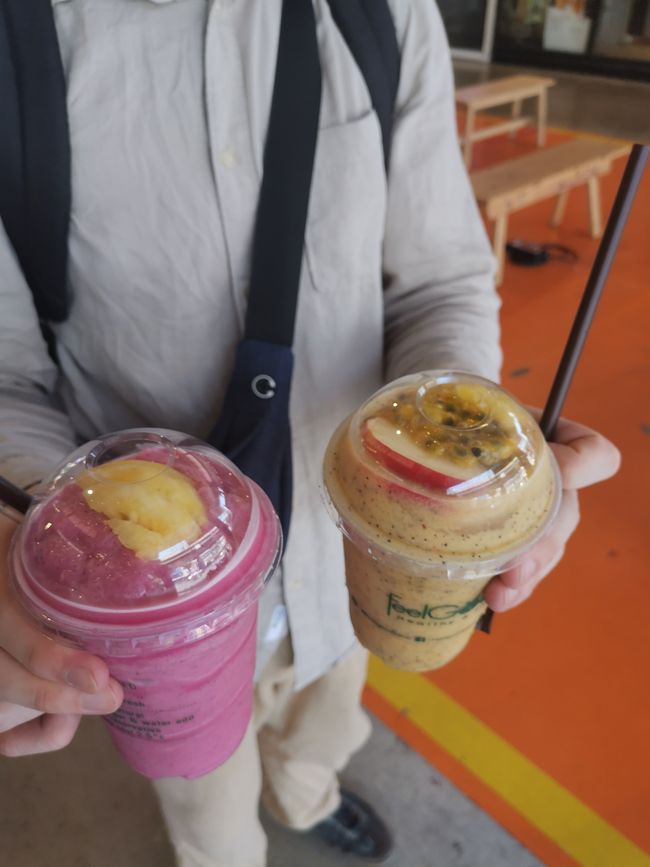
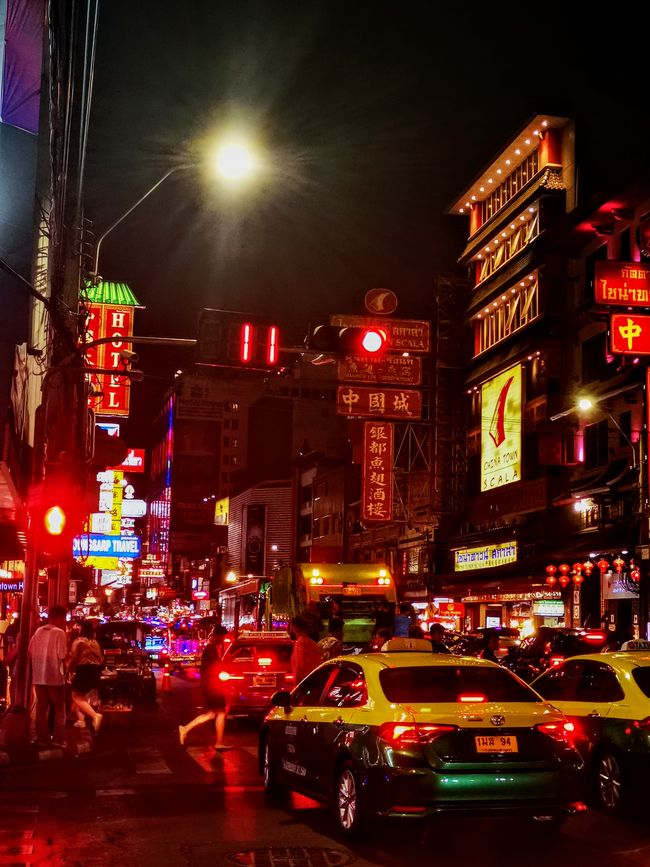

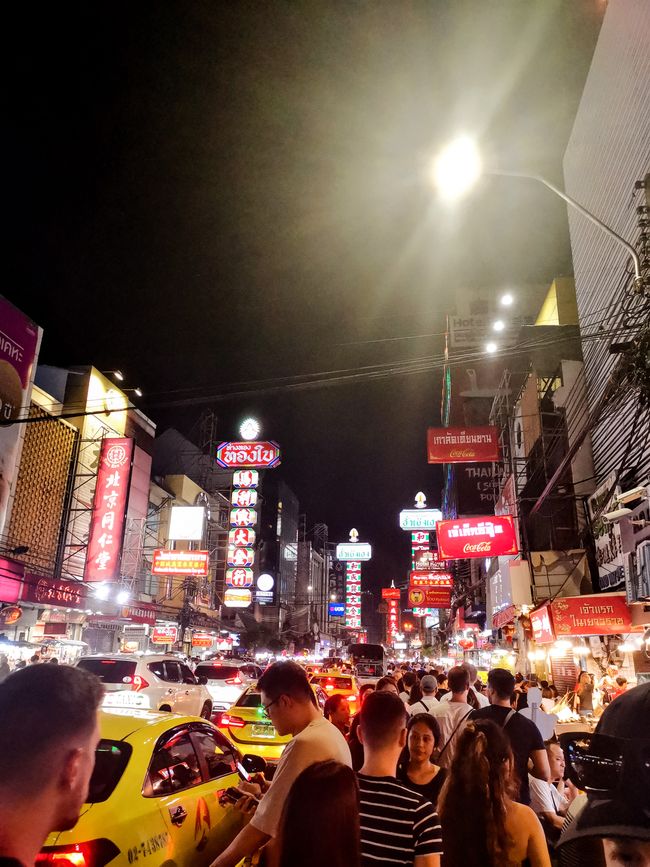
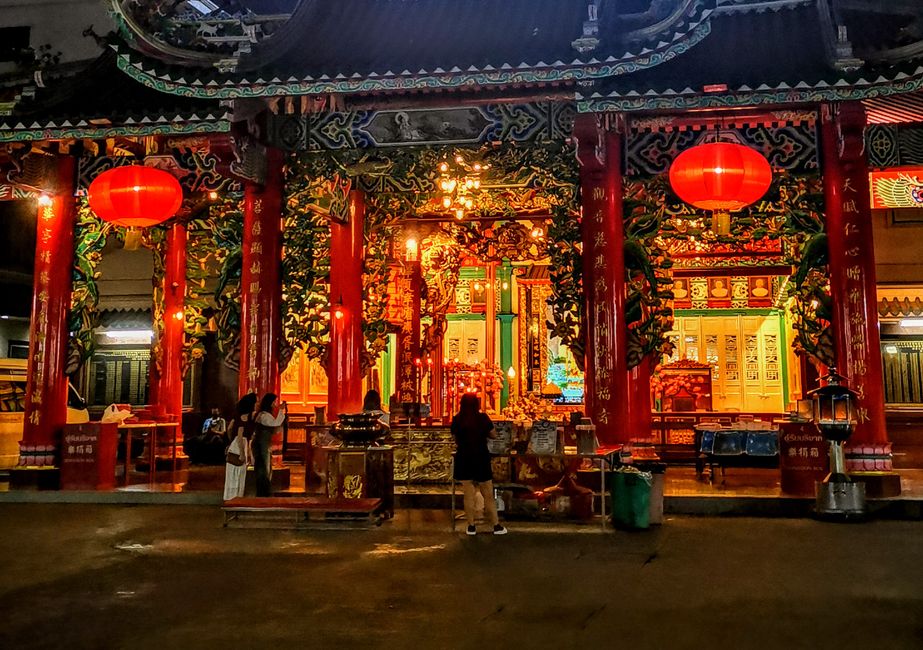
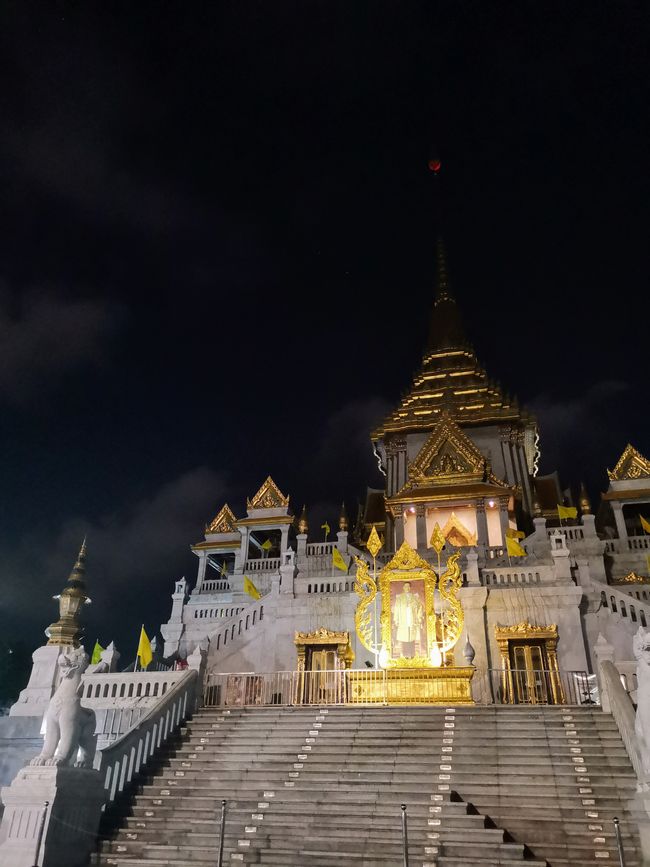
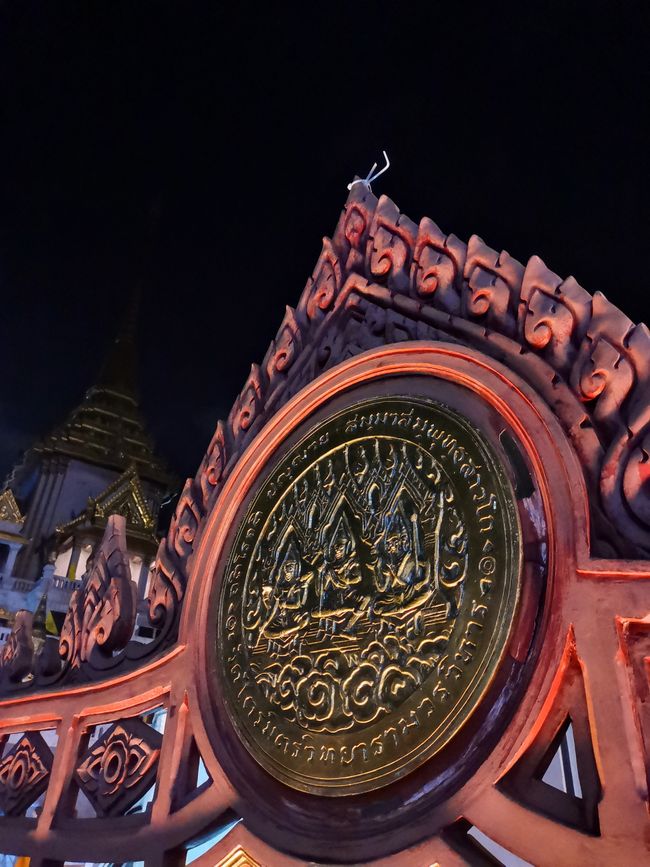
07 March, 2024
We started our day well-rested and motivated to discover the wonders of Thailand. We packed our things, which basically only included the most important things like wallet, ID and keys, and put on long clothes. Long in this case meant that we made sure to cover our shoulders and arms sufficiently, as the Thai sun could mercilessly burn everything beneath it and since we had just spent a long time in sun-poor Germany, we could already see ourselves burnt in our minds' eye.
The first stop was the temple opposite our room [Image 1] . Thai temples, especially the more modern ones, are often painted with lavish, even cheap-looking gold. The line between pomp and kitsch is very thin here. We were not yet able to find out whether this was real gold, as many Buddha statues were also covered in real gold leaf. So it was not far-fetched that the architecture was also decorated with real gold here and there.
The temple complex was maintained and managed by the monks who lived there and was always open and accessible to visitors. The only important thing was to dress appropriately. Shoulders, chest and at least up to the knees should be well covered.
The buildings were always entered barefoot, which presented one or two challenges, as the shoe racks were often in the blazing sun and on stone slabs.
In Thailand, it was not permitted to sit with your feet facing the Buddha or even to point your feet at someone, as they are considered the dirtiest part of the body in this country.
Inside a temple there were a kind of raised platform or platform. These were reserved for the monks to sit on [Image 2]. The walls were decorated with elaborate wall paintings [Image 3] , ornaments and the like. They told whole stories and were often impossible to understand at a glance. It took a lot of time and patience to get to grips with them, as they reflected complex behavior and often worked with symbols.
After a short rest in the temple, we continued our exploration of the neighborhood. At a stall, we bought a couple of parasols, which, unlike umbrellas, had an additional black cover on the inside that prevented any rays from getting through and thus protected you well.
A narrow route that led along a canal and the back of houses and gardens took us further towards the city center and the hustle and bustle. In the canal, a huge monitor lizard [Image 5] was leisurely swimming its morning round through grit and floating plastic waste. Monitor lizards are diurnal reptiles that can grow up to 3 meters long and weigh around 20 kg. However, they are not dangerous to humans, as they only eat small mammals, fish and birds.
In the bushes I found what was probably the most beautiful "trash" I had ever seen. A hand-made old door with a beautiful ornament that had served its purpose and was thrown out. [Image 6]
Before we even left the house, I researched the most important Thai words and phrases [Image 7] , as we expected that a large part of the population would not speak English. It turned out that Thai was not an easy language to learn. It was of course completely different from languages we knew and was not intuitively understandable. In addition, many letters were pronounced differently or remained silent. We found out that after every sentence you had to say either "Khab" (if you were a man) or "Ka" (if you were a woman).
Street signs, billboards, texts - everything was labeled with Thai sign language, which looked something like this:
People who eat bland food should definitely order it a little less bland before ordering it.
In our immediate neighborhood we found a large, open building that was a kind of bistro, the "Maruay Food Hall" [Image 8] . Many stalls were lined up around a square with benches and chairs. There was a large selection of dishes and once you had decided on something, you paid at the stall and took your dish with you to the middle [Image 9] . After eating, the staff who were responsible for the entire room cleared away the dishes. The food was incredibly delicious and really good value for money. For a portion of Phad Thai (glass noodles with shrimps) you paid 60 Baht (the equivalent of about 1.50€). The only thing that shouldn't be underestimated is the Thai spiciness, as it is sometimes considered to be one of the most intense.
After the main courses, we strolled through the aisles with colorful stalls, where each dish looked more colorful and interesting than the previous one [Image 10]. We bought two smoothies, which were freshly prepared and were probably the best we've ever had [Image 11] . Of course, exotic fruits such as dragon fruit, passion fruit and pineapple were not missing.
At 80 Baht (=2.00€), the smoothies were also incredibly cheap and became part of our daily routine.
In the evening we took Grab to Chinatown, a very lively district which, as the name suggests, is characterized by Chinese shops and stalls [Picture 12, 12, 14].
Chinatown was of course an absolute tourist magnet and accordingly crowded. Every few steps we sat down at a stall and sampled the Chinese culinary specialties.
The relationship between China and Thailand existed as early as the Ayutthaya Empire (ca. 13th century) and Chinese people have been migrating to Thailand ever since. This gave rise to a Thai-Chinese population group that today sees itself as more Thai, but still holds on to Chinese beliefs and traditions. For this reason, small Chinese shrines and temples can be found in Thailand where Quan Yin (the mother goddess) and other deities are honored. We found one such temple hidden in a side street that evening [Image 15] . Chinese people knelt in front of altars with incense sticks between their folded hands and prayed for health, abundance and protection.
On our way home we strolled through the night-lit grounds of a Thai temple [Image 16] and looked at the beautiful ornaments, the depth of which we still wanted to understand [Image 17].
We noticed that gigantic pictures of the Thai king and the royal family were hanging everywhere, reminding the population who their leader was. We found out that it was a severe punishment (many years in prison) to say a bad word about the royal family, or even the king. But as we would find out later, some of the population still had strong opinions of their own about the political situation in the country and talked about it behind closed doors. But more on that later.
Cevap
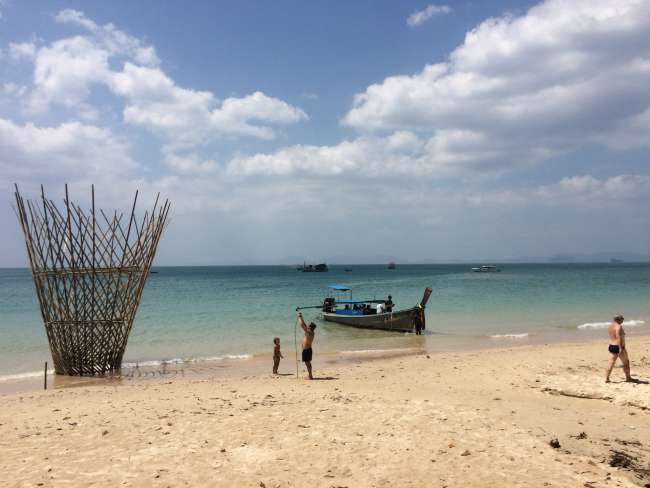
Seyahat raporları Tayland
